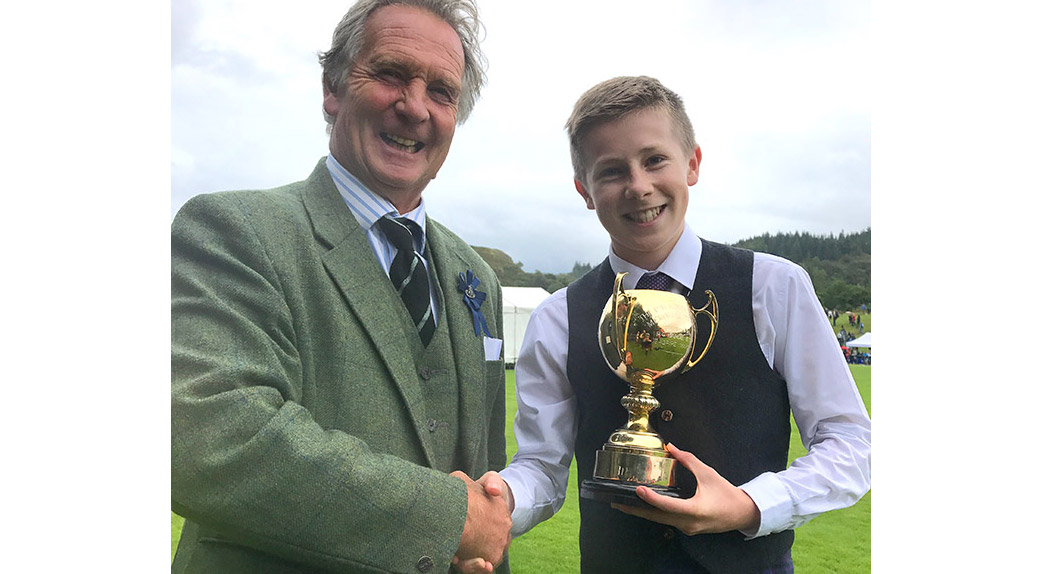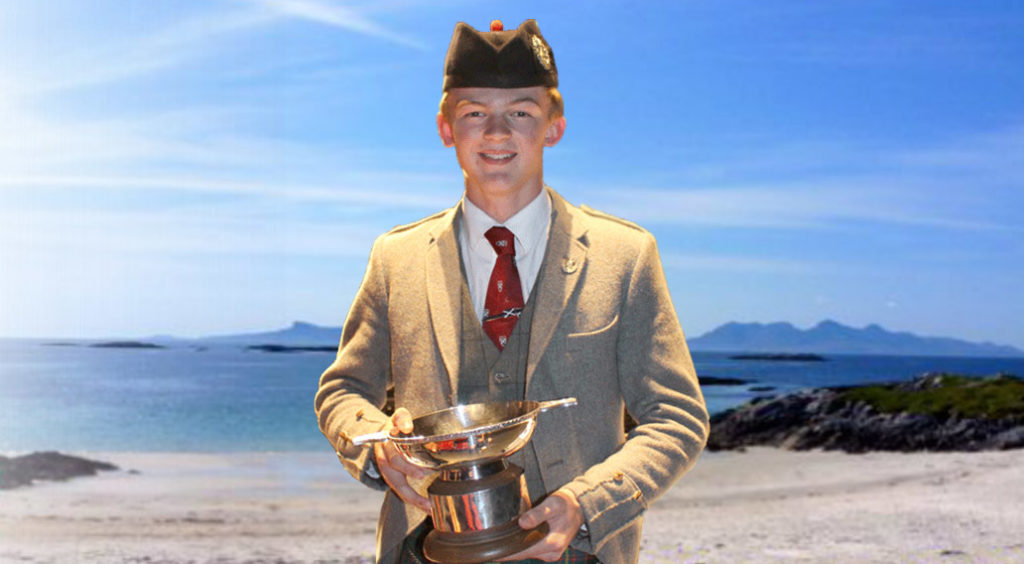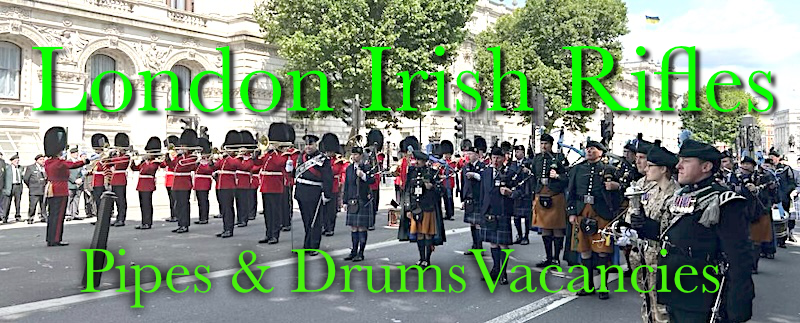

A last look at the piping at the 2017 Northern Meeting today. Before that a word about Oban and its dress code. Pipers at the Argyllshire Gathering are permitted to play without jackets. The rooms get hot at times and the laudable aim of the organisers is to make the competitors as comfortable as possible in the pressure cooker atmosphere of the small theatre at the Corran Halls and in the confined space of other competition venues.
You might think that such a dispensation would yield a pipe band outcome where everyone wears a waistcoat, a smartly pressed shirt with cufflinks, fastened tie and a bonnet correctly (mostly) positioned on the head. Not so. What I witnessed this year was a noticeable decline in appearance. Here we had some of the most important piping events in the world (and some of the best musicians) parading in rolled up shirt sleeves, ties unhinged, bonnets askew, no waistcoat or kilt belt – and no visual respect for the occasion.
So it is one thing for promoters to try to accommodate sweaty pipers, but if the no jacket allowance leads to a further drop in standards of dress and deportment then we need to be concerned. Could Oban not state in its rules that pipers who drop the jacket must wear a waistcoat, must have ties appropriately knotted, shirtsleeves fastened at the cuff etc? In the picture up top young Luke Kennedy shows pipers how they should dress at the Gathering if they don’t want to wear jackets (bonnet to be added). Luke is seen receiving the P/M RG Hardie Memorial Trophy for Intermediate MSR playing from AG Assistant Piping Convenor Jamie Mellor.
No such worries at Inverness where jackets are de rigueur….. shame about some of the playing in the ‘B’s. The topic of conversation amongst many of the adjudicators who presided over the ‘B’ grade March, Strathspey and Reel and ‘B’ Grade Hornpipe & Jig was of the indifferent (I don’t want to go any stronger than that) standard of performance. One judge wrote to me: ‘I am seriously concerned about the state of piping among our up and coming players – lack of musicality, technique, phrasing, bagpipes etc. Three minutes should be ample to tune a set of pipes surely? Very few achieved it. That was an uncomfortable experience today for all three of us – for seven hours.’
[wds id=”2″]
I would echo these sentiments but would say that in the ‘B’ Hornpipe & Jig that I judged with Ian McLellan the prizewinners all played well and there were others who perhaps had a good hornpipe but failed in the jig and vice versa. I am sure this would be the same in the ‘B’ MSR, however my correspondent’s point is well made.

The number of times pipers came to the floor with the pipes well in, only to put them out, and then struggle to recover their tuning – and invariably failing – was considerable. Add to that the flaws in basic technique: D throws not properly grounded to low G, double Es from F false fingered, inconsistencies in grips and taorluaths, the list goes on and this at the Northern Meeting!
Consider too, a failure to understand, or deliver, the basic ceol beag idioms and we have a problem. Are senior pipers/ judges doing enough teaching? Are the draconian rules of the Solo Piping Judges Association already having an effect? Do nerves play a big part? Certainly, this is Inverness after all. But there is a world of difference between someone trying to play correctly and failing and someone who misunderstands the basic requirements of the art.
Band playing may have made an unfortunate impact too. The quality of fingerwork required to succeed on the solo platform probably exceeds that of the average Grade 1 piper. We often hear pipers fresh from a win at the Worlds struggling to execute their solo stuff with the required clarity and definition. Rhythm: in bands this comes from the pipe major and the drummers. Individual feel for the music is secondary, yet on the solo board the piper is lost without it.
And tuning. Do pipers actually rehearse the three or four-minute tuning lights regime they encounter at Oban and Inverness? I would be amazed if they did not, yet judging by the evidence, this is clearly not the case. (Some even think that by standing with their backs to the lights as the red approaches they will gain extra time and fool the judges. Believe me, this does the guilty piper no favours.) Has a reliance on electronic tuners caused a decline in the development of what used to be called a ‘good ear’? It would seem so.
Many pipers will be hurting after a disappointing Oban and Inverness. I’ve been in that movie. The only response can be a complete re-evaluation of your instrument (from the bag up), your technique, your appreciation of basic rhythm and expression and a thorough look at your practice regime. For goodness sake don’t despair. Many’s the piper who, with a change in direction or a look at the basics, manages to turn round their performance and consequent success rate. Remember, just to get to Oban and Inverness says something about your standard of play. You have to be a very good piper to be accepted.
Do not wander in the wilderness cursing judges and misfortune. Seek out a senior player or judge who has been there and done it all. Hopefully some guidance will be forthcoming. Get your set tunes off by Christmas; cut out that march you never seem to do well with, think hard about linking your strathspeys and reels and how well they sit together. Is John Morrison, Assynt House worth the risk when Alick C would do? Look logically and rationally at all of this, take the necessary action and you should be able to approach next season with renewed confidence.
• Get full results from Oban here. Get full results from Inverness here.
[wds id=”3″]

















This just seems to me to be the natural direction of performance due to the constraints of competition: competitions are not directed at general audiences, so dress and comportment are irrelevant. Musicality suffers as well, partially due to the lowest denominator of “don’t mess up” or “don’t risk anything” (a cliche insight, even if accurate), but also due to the separation of the music from its cultural roots and contexts: of the 5 genres (idioms) of cool beag, four are dance styles that are from indigenous cultural contexts that have more or less vanished. I would argue something similar is happening with the marches as well.
While competitions may have saved the music, they have also created a context of performance far abstracted from the music’s origins. What you are hearing and seeing is a natural consequence, and there’s very little that can be done about it.
In fact, we reward the results.
One has to ask the question; if competitors were able to put themselves in the judge’s position, would it not have some effect on how you perceive a performance if the contestant was poorly attired? We are all susceptible to the ‘theatre’ of these events – the judges no less, and I would echo Rab’s feelings that good dress standards should be maintained, even if it’s only to please the judge.
Judges should also not be shy about addressing this decline of dress as well to competitors directly before they play. I remember how at the Delco Games in 1989 when about to play in front of James McIntosh for the Grade 1 piobaireached, was immediately admonished for not wearing my glengarry. He ordered me off the boards to not re-appear until I was returned properly dressed. And to add, not to wear a Seaforth cap badge in front of him again! Truly a Cameron Highlander through and through.
The problem in the US is not enough good players are teaching the up and coming competitors. Too many think past competitors are judging and falsely thinking that this is teaching. Students listen to teachers, and competitors complain about judges. I have to agree whole heartedly with Mr. Wallace, the competitors of today are not as disciplined as in years past.
Your comments on the standard of piping are well spoken and based upon a much greater talent than mine. It is hard to argue with success though as I am sure most agree the standard of playing in pipe bands is better than it has ever been. That being said, I just wonder if there are too many folks in this grade who maybe should not be or maybe the criticism is too harsh for those competing in the B category. In the old days there were band pipers and there were solo pipers and never the two could mix. Today it seems everyone has to be proficient in both facets of the art. Is that asking too much from those who may not be solo superstars but competent band players? I think your criticism is well founded especially where you point to the basics that certainly cross over both facets of piping like tuning and execution of basic movements.